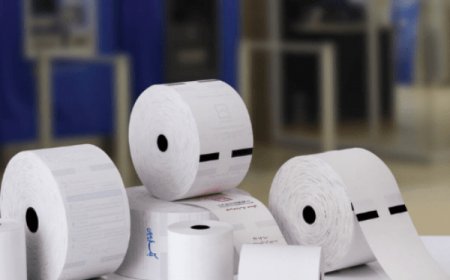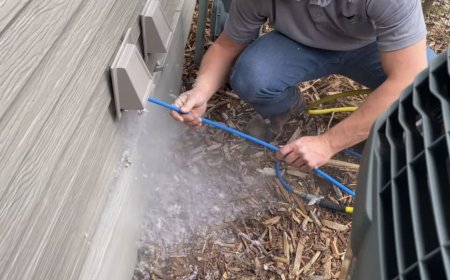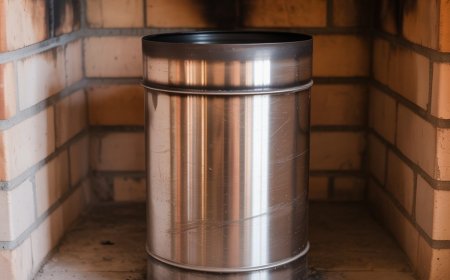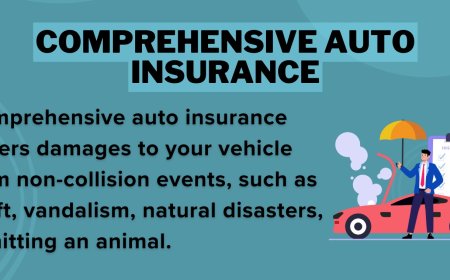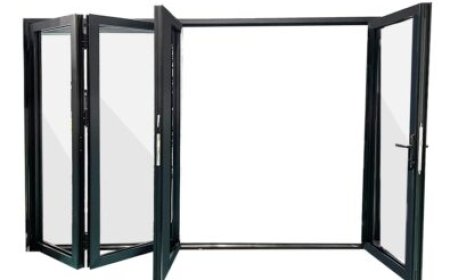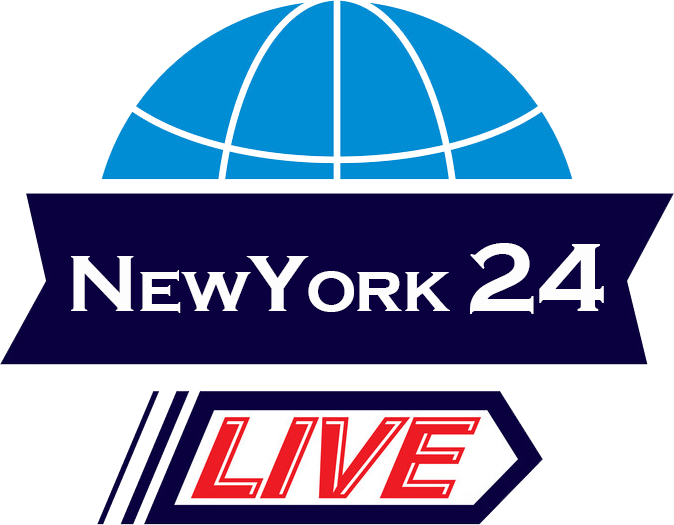Step-by-Step Guide to Pre Production Inspection
Master Pre Production Inspection with our step-by-step guide. Ensure top quality and reduce risks efficiently. Start optimizing your production process today!

Quality is the bedrock of any successful product. In the intricate world of manufacturing, ensuring that a product meets the desired standards is not a one-time check at the end of the production line; it's a continuous process that begins even before mass production kicks off. This is where the Pre-Production Inspection (PPI) plays a pivotal role. For businesses aiming for excellence and customer satisfaction, understanding and implementing a robust PPI strategy is non-negotiable.
QC-Easy LTD. is dedicated to empowering businesses with the knowledge and tools to achieve impeccable quality control. In this comprehensive guide, we'll walk you through the step-by-step process of a Pre-Production Inspection, highlighting its significance and providing actionable insights for seamless implementation.
What is Pre-Production Inspection?
Before diving into the "how," let's solidify the "what." A Pre-Production Inspection, often conducted after the order has been placed but before actual mass production begins, is a critical quality control measure. Its primary purpose is to verify that the manufacturer has a clear understanding of the product specifications, quality requirements, and production timeline. Its about catching potential issues at their nascent stage, preventing costly rework, delays, and ultimately, damaged reputations.
Think of it as laying a strong foundation before constructing a skyscraper. Without a solid foundation, the entire structure is vulnerable. Similarly, without a thorough PPI, your production run is susceptible to a cascade of quality issues.
Why is Pre-Production Inspection Indispensable?
The benefits of a well-executed PPI extend far beyond simply identifying defects. It's a strategic investment that yields significant returns:
? Early Problem Detection: The most crucial benefit is identifying potential issues related to materials, components, machinery, and production processes before mass production starts. This proactive approach saves immense time and money compared to discovering problems during or after production.
? Clarification of Specifications: PPI ensures that both the buyer and the manufacturer are on the same page regarding product specifications, quality standards, and any specific requirements. Misunderstandings can be ironed out at this early stage.
? Verification of Materials and Components: It allows for the inspection of raw materials and critical components to ensure they meet the agreed-upon quality, quantity, and technical specifications. Using substandard materials can compromise the final product's integrity.
? Assessment of Production Capability: The inspection provides an opportunity to assess the factory's readiness for mass production, including the availability of necessary machinery, tools, and skilled personnel.
? Minimizing Rework and Delays: By preventing issues from escalating, PPI significantly reduces the likelihood of costly rework, production delays, and missed delivery deadlines.
? Protecting Your Brand Reputation: Delivering high-quality products consistently builds trust and enhances your brand's reputation. PPI is a crucial step in ensuring that reputation remains untarnished.
? Cost Savings: While there's an initial investment in conducting a PPI, the long-term cost savings from avoiding recalls, returns, and customer dissatisfaction are substantial.
? Improved Communication and Collaboration: The PPI process fosters better communication and collaboration between the buyer, the manufacturer, and the quality control team.
Your Step-by-Step Guide to a Successful Pre-Production Inspection
Now, let's delve into the practical steps for conducting an effective Pre-Production Inspection.
Step 1: Define Your Scope and Standards
Before any boots hit the factory floor, thorough preparation is paramount. This initial phase involves meticulous planning and documentation.
? Product Specifications and Requirements: Clearly define every aspect of your product. This includes detailed drawings, material specifications, color codes (e.g., Pantone), dimensions, weight, functionality, packaging requirements, labeling, and any specific industry standards or regulations (e.g., CE, RoHS, FCC). The more detailed, the better.
? Quality Control Checklist: Develop a comprehensive QC checklist based on your product specifications. This checklist will serve as the inspector's roadmap and ensure consistency across all inspections.
? Approved Samples/Golden Samples: If applicable, provide the manufacturer with approved samples (often called "golden samples" or "counter samples") that represent the exact quality and specifications you expect. These serve as a benchmark for comparison.
? Acceptable Quality Limits (AQL): Determine your AQL levels for different types of defects (critical, major, minor). This statistical tool helps you define the maximum number of defects that can be tolerated in a sample size.
? Production Timeline and Milestones: Establish a clear production schedule with key milestones, including the target date for PPI, first article inspection, and mass production.
? Communication Protocols: Define how and when communication will occur between your team, the manufacturer, and the inspection agency.
Step 2: Select Your Inspection Partner
While some businesses may have in-house quality control teams, many opt for inspection marketplace like QC-Easy LTD. for their expertise, objectivity, and global reach.
? Experience and Expertise: Choose a partner with a proven track record in your industry and product category.
? Accreditation and Certifications: Ensure the agency is accredited by relevant international bodies.
? Reputation and References: Look for agencies with strong reputations and positive client testimonials.
? Communication and Reporting: Verify their communication protocols and the clarity and timeliness of their inspection reports.
? Geographic Coverage: If you work with manufacturers in different regions, ensure the agency has a presence in those locations.
Step 3: Schedule the Inspection
The timing of your PPI is crucial. It should ideally be conducted after the manufacturer has:
? Received and understood all product specifications and samples.
? Sourced and received all necessary raw materials and components.
? Prepared initial production samples or prototypes.
? Set up their production line for the initial run.
? Communicate clearly with the manufacturer and your inspection partner to find a mutually agreeable date.
Step 4: On-Site Inspection
This is where the rubber meets the road. The inspector, guided by your QC checklist and specifications, will perform a detailed on-site assessment. Key areas of focus include:
Verification of Raw Materials and Components:
? Quantity: Are the quantities of materials and components sufficient for the initial production run?
? Quality: Do they meet the specified quality standards? (e.g., material composition, color, texture, strength).
? Specifications: Do they match the approved samples and technical drawings?
? Storage: Are materials stored appropriately to prevent damage or degradation?
Assessment of Production Equipment and Machinery:
? Availability: Is all necessary machinery and equipment available and in good working order?
? Calibration: Are key pieces of equipment properly calibrated?
? Maintenance: Is there evidence of regular maintenance?
Review of Production Processes:
? Work Instructions: Are clear work instructions available for all production stages?
? Process Flow: Is the production process logical and efficient?
? Worker Skill and Training: Are workers adequately trained for their tasks?
? Environmental Conditions: Are the production environment conditions (e.g., temperature, humidity, cleanliness) suitable for the product?
Verification of Initial Samples/Prototypes:
? Conformity: Do the initial samples produced conform to all specifications, dimensions, and aesthetic requirements?
? Functionality: Are all functions working as intended?
? Assembly: Is the assembly process correct and robust?
Packaging and Labeling Review:
? Materials: Are the specified packaging materials available and correct?
? Design and Content: Do the packaging design, artwork, and labeling comply with your requirements and any regulatory standards?
? Protection: Is the packaging adequate to protect the product during transit?
Documentation Review:
? Quality Control Records: Does the manufacturer have appropriate quality control records and procedures in place?
? Certificates: Are relevant material certificates or test reports available?
? Identification of Potential Bottlenecks or Risks: The inspector will look for any areas that could lead to delays or quality issues during mass production.
Step 5: Receive and Review the Inspection Report
Following the on-site inspection, your chosen partner will compile a detailed report. This report should include:
? Summary of Findings: A concise overview of the inspection results.
? Detailed Observations: Specific findings for each checked item, including measurements, observations, and photographic evidence.
? Identified Defects/Non-Conformities: A clear list of any issues found, categorized by severity (critical, major, minor).
? Recommendations: Actionable recommendations for corrective actions.
? Supporting Documentation: Photos, videos (if applicable), and copies of any reviewed documents.
Crucially, review this report thoroughly and promptly.
Step 6: Implement Corrective Actions and Follow-Up
Based on the inspection report, work collaboratively with your manufacturer to address any identified issues.
? Communicate Findings: Share the report with the manufacturer and discuss the non-conformities.
? Develop Corrective Action Plan (CAP): Agree on a clear CAP, outlining specific steps, responsible parties, and deadlines for addressing each issue.
? Monitor Progress: Track the implementation of the CAP.
? Re-inspection (if necessary): For critical issues, consider a follow-up inspection to verify that corrective actions have been effectively implemented before mass production commences.
? Beyond the Checklist: Best Practices for Pre-Production Inspection
To maximize the effectiveness of your PPI, consider these best practices:
? Build Strong Relationships: Foster open and transparent communication with your manufacturer. A collaborative approach yields better results.
? Continuous Improvement: Use insights from PPIs to refine your product designs, specifications, and manufacturing processes over time.
? Invest in Training: Ensure your internal teams understand the importance of quality control and the nuances of PPI.
? Leverage Technology: Utilize quality management software or platforms to streamline communication, documentation, and reporting.
? Don't Rush the Process: Allow sufficient time for the PPI and any necessary corrective actions. Rushing can lead to overlooked issues.
Conclusion
By embracing a diligent Pre-Production Inspection strategy, you're not just preventing problems; you're actively building a foundation for successful product launches, satisfied customers, and a thriving business. Make quality the cornerstone of your operations starting with a flawless beginning.
At QC-Easy LTD., we understand the complexities of global manufacturing and the critical role of robust quality control. Our experienced inspectors and comprehensive services are designed to provide you with peace of mind, ensuring your products meet the highest standards. From meticulous Pre-Production Inspections to during production and pre-shipment checks, we are committed to helping you build a reputation for uncompromising quality.













